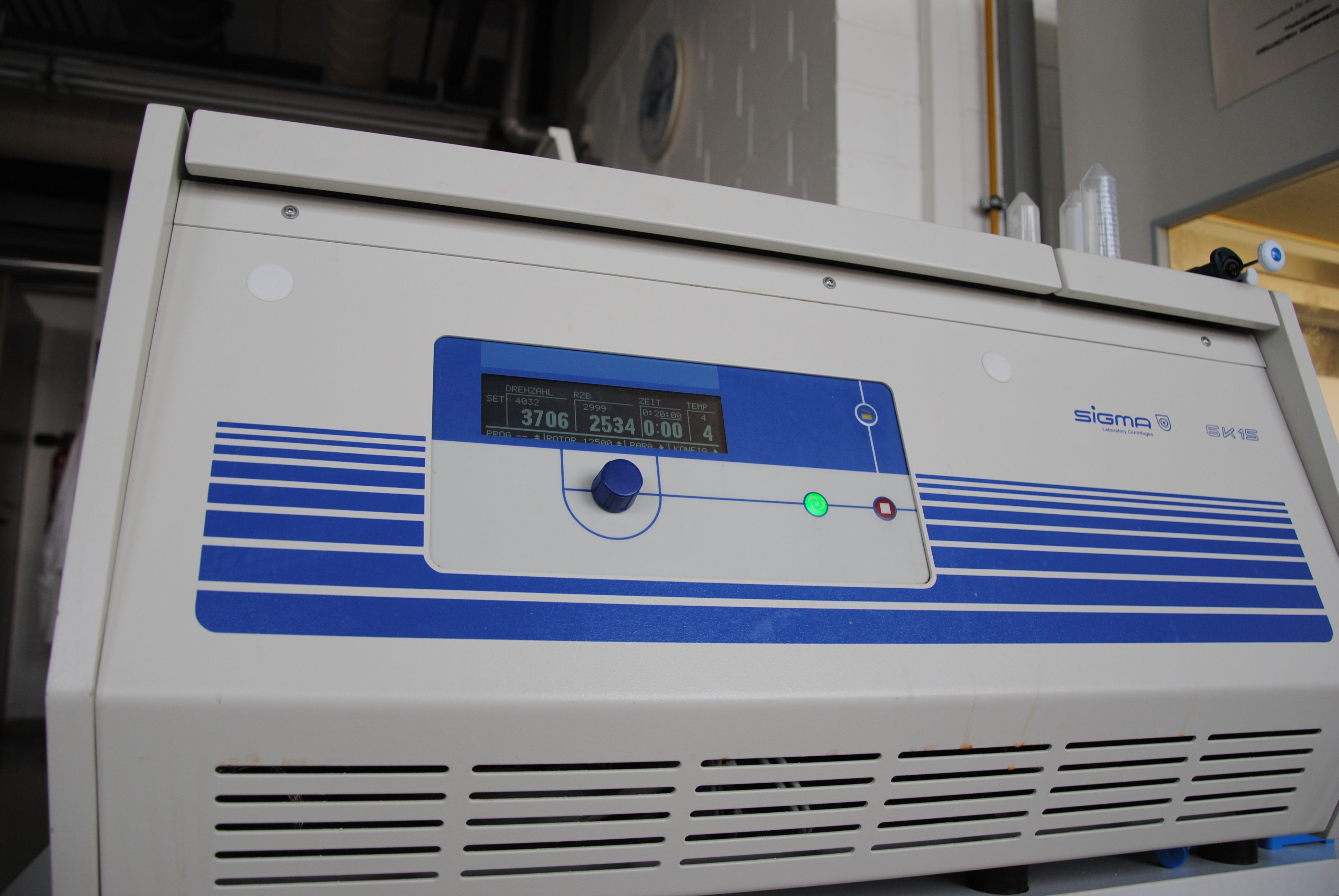Team:Bielefeld-Germany/Results/S-Layer/Guide/4b
From 2011.igem.org
(Created page with "{{Bielefeld_2011_Header}} =Cell disruption with a high-pressure homogenizer= [[Image:IGEM-Bielefeld2011-Homo.JPG|430px|thumb|left|Rannie high-pressure homogenizer which we used...") |
(→Cell disruption with a high-pressure homogenizer) |
||
| Line 5: | Line 5: | ||
[[Image:IGEM-Bielefeld2011-Homo.JPG|430px|thumb|left|Rannie high-pressure homogenizer which we used for cell disruption.]] | [[Image:IGEM-Bielefeld2011-Homo.JPG|430px|thumb|left|Rannie high-pressure homogenizer which we used for cell disruption.]] | ||
[[Image:IGEM-Bielefeld2011-Centrifuge.JPG|430px|thumb|left|A Sigma 6K15 centrifuge which we used in our project.]] | [[Image:IGEM-Bielefeld2011-Centrifuge.JPG|430px|thumb|left|A Sigma 6K15 centrifuge which we used in our project.]] | ||
| + | |||
| + | <br style="clear: both" /> | ||
The S-layer fusion proteins form inclusion bodies in the E. coli cells (at least most of them). Inclusion bodies have the advantage that they are relatively easy to clean-up and are resistant to proteases. But inclusion bodies are unsoluble so they have to be solubilized by urea or guanidin hydrochloride. In addition, these chemicals suppress the self-assembly ability of the S-layer proteins which leeds to monomeric S-layer proteins. The cell disruption is carried out in a buffer containing 6 M urea, 50 mM Tris-HCl .... | The S-layer fusion proteins form inclusion bodies in the E. coli cells (at least most of them). Inclusion bodies have the advantage that they are relatively easy to clean-up and are resistant to proteases. But inclusion bodies are unsoluble so they have to be solubilized by urea or guanidin hydrochloride. In addition, these chemicals suppress the self-assembly ability of the S-layer proteins which leeds to monomeric S-layer proteins. The cell disruption is carried out in a buffer containing 6 M urea, 50 mM Tris-HCl .... | ||
Revision as of 07:26, 28 October 2011

Cell disruption with a high-pressure homogenizer
The S-layer fusion proteins form inclusion bodies in the E. coli cells (at least most of them). Inclusion bodies have the advantage that they are relatively easy to clean-up and are resistant to proteases. But inclusion bodies are unsoluble so they have to be solubilized by urea or guanidin hydrochloride. In addition, these chemicals suppress the self-assembly ability of the S-layer proteins which leeds to monomeric S-layer proteins. The cell disruption is carried out in a buffer containing 6 M urea, 50 mM Tris-HCl ....
Normal lab methods like sonification or enzymes for cell disruption are unpracticable when you have to disrupt bigger amounts of biomass. Mechanical methods like pebble mills or high-pressure homogenizers are the methods of choice in this case. But mechanical application of energy always leeds to heat input. Heat can damage your proteins so you have to ensure a sufficient cooling of the cell solution during cell disruption. We did this by placing our high-pressure homogenizer in the cooling chamber of our lab and not running it continuously but in cycles (3 cycles with cooling phases between the cycles, p = 800 bar).
The cell debris is removed by centrifugation and the supernatant is used for further purification.
Only purified S-layer proteins will self-assemble - click here for further purification steps.
 "
"


